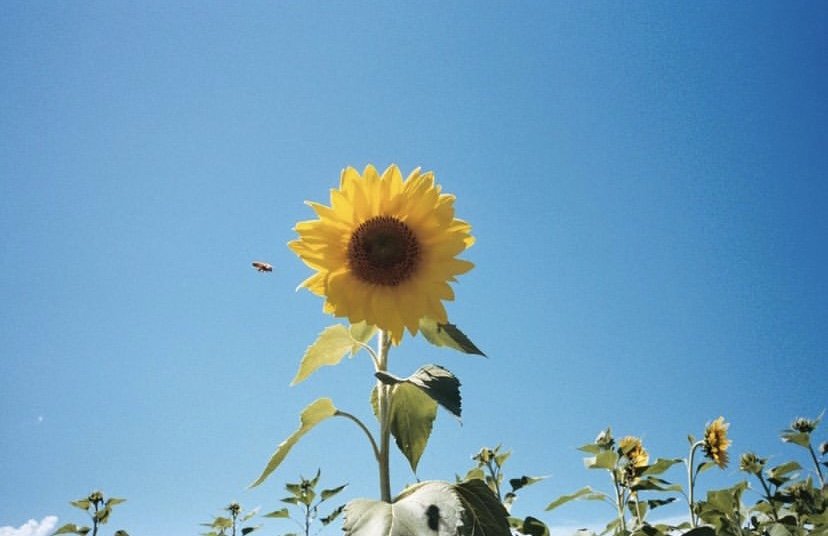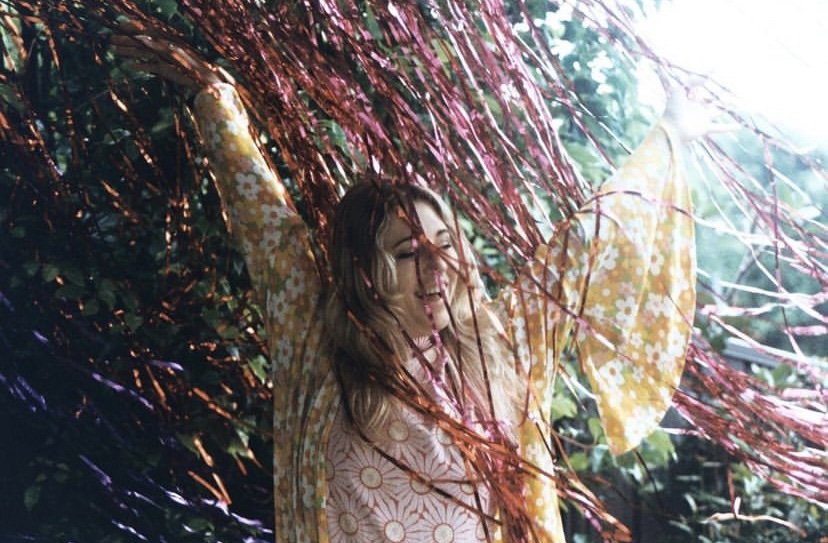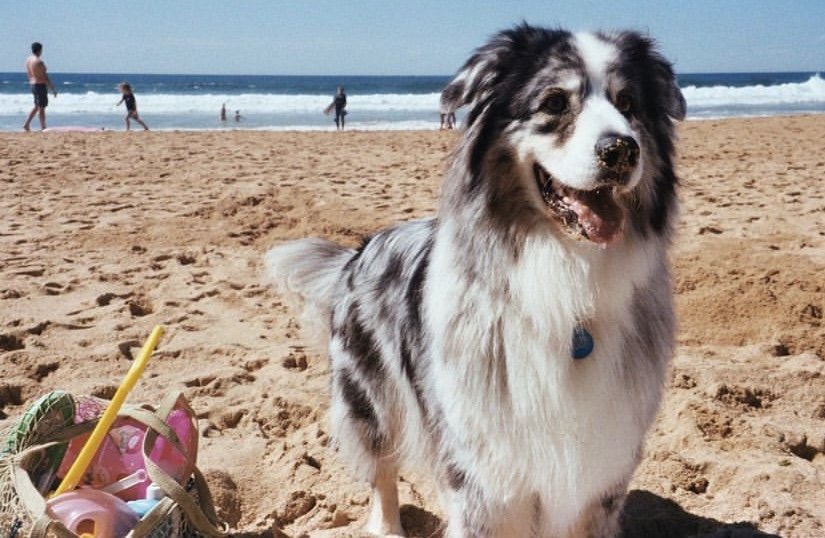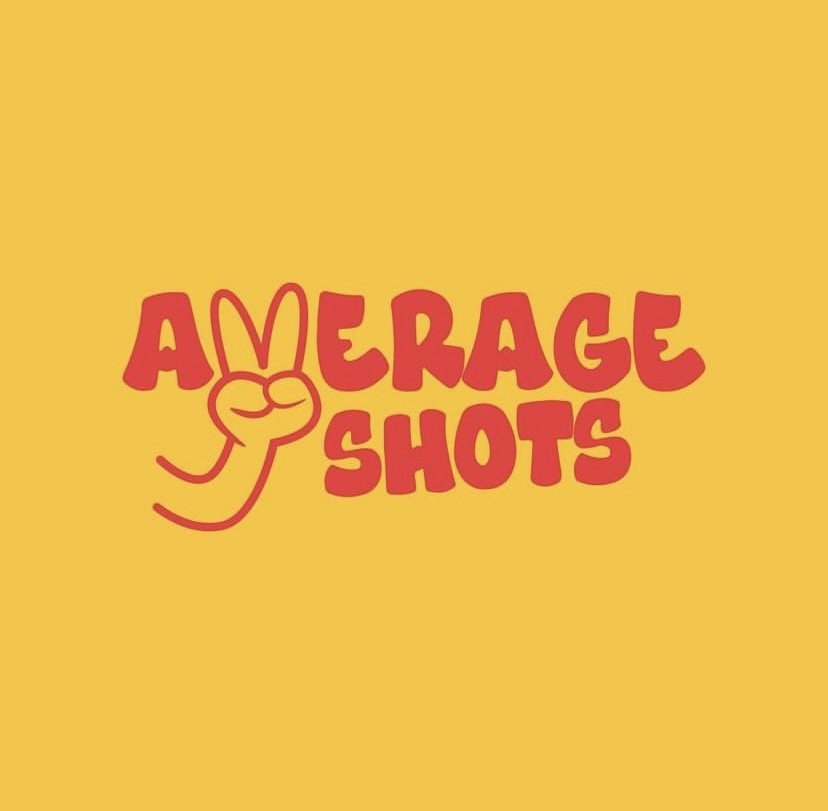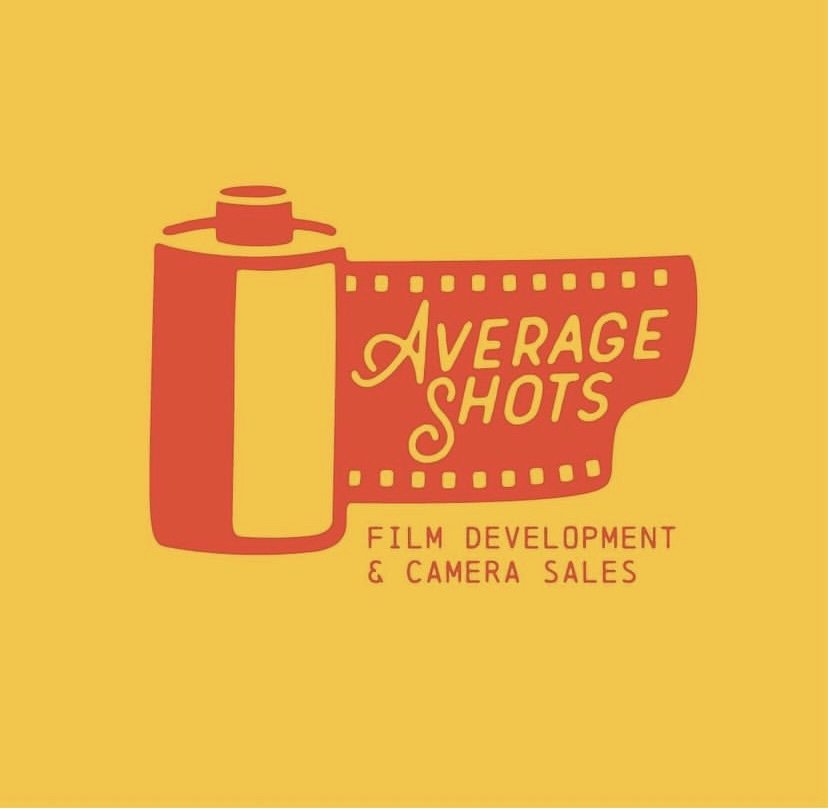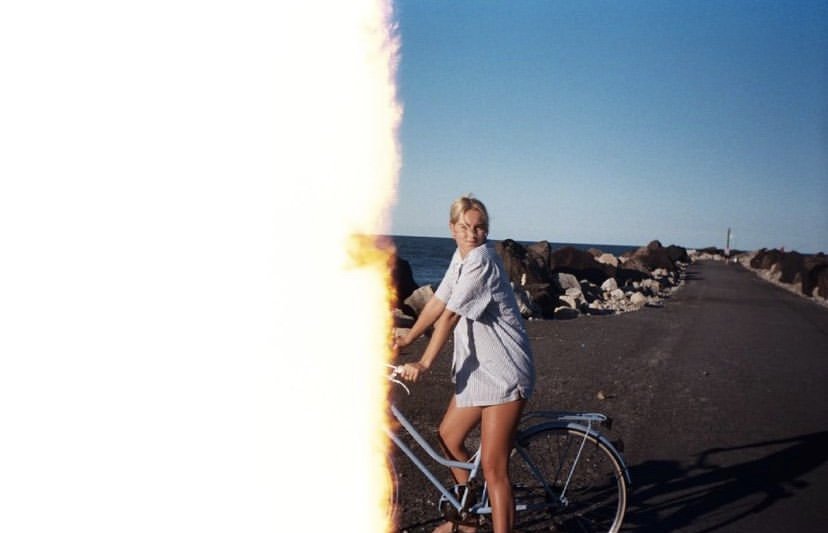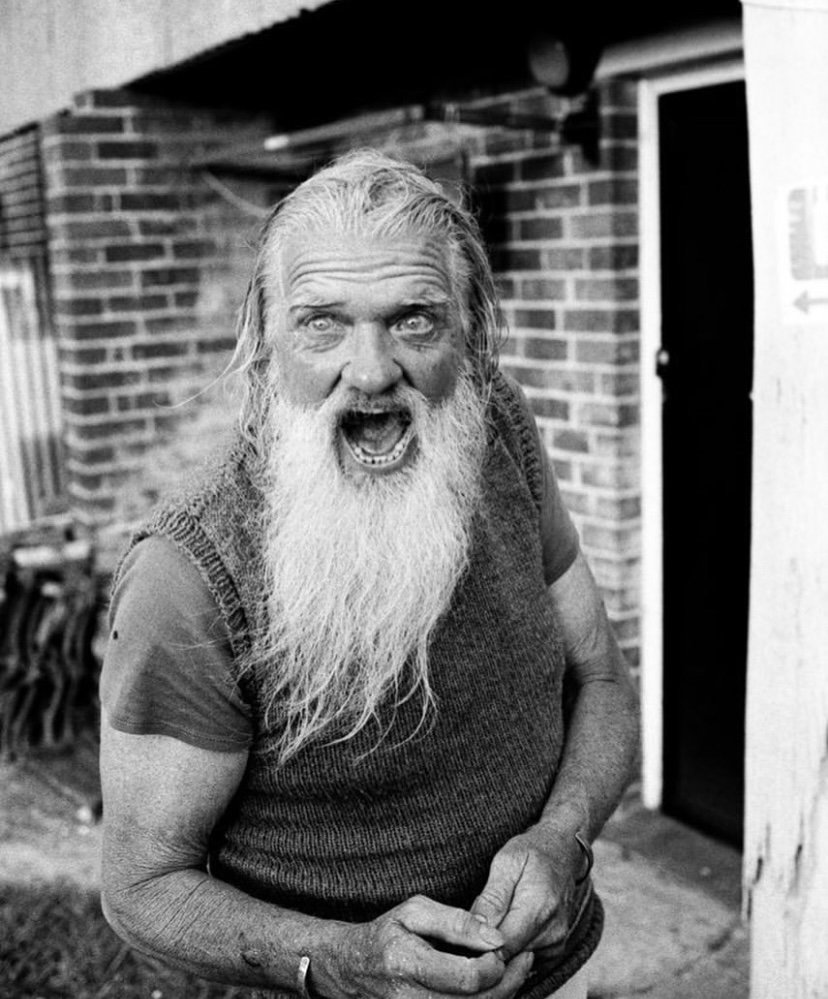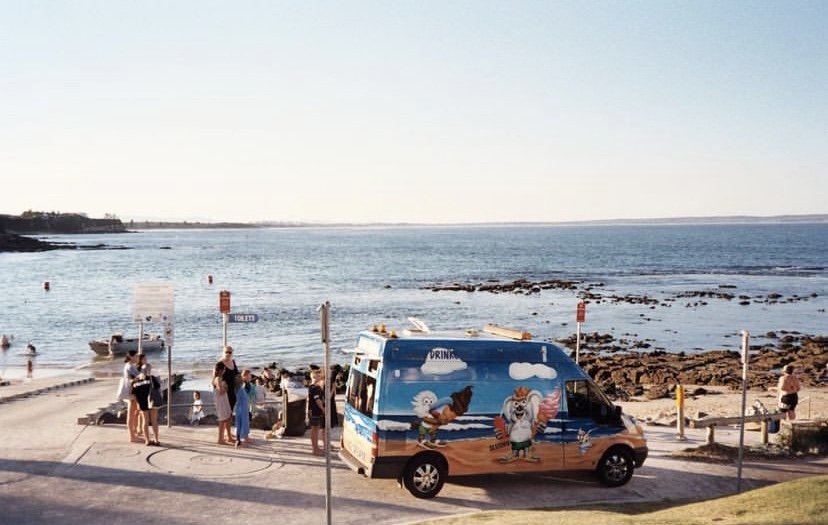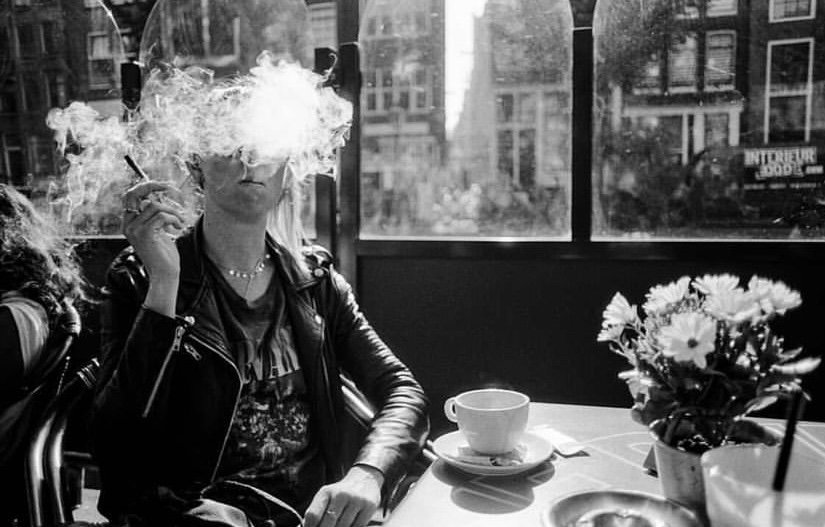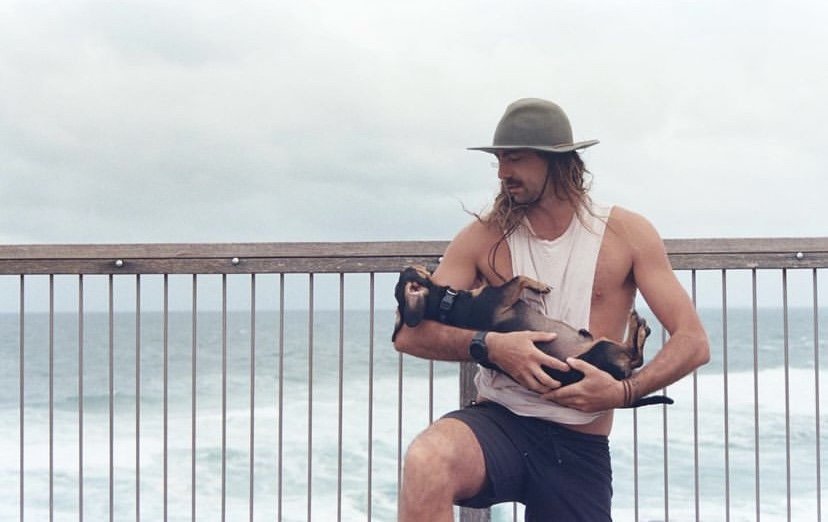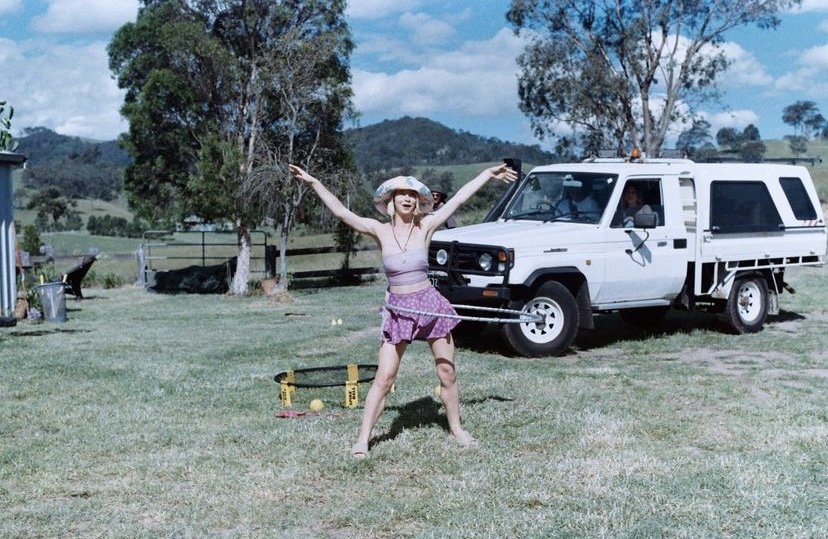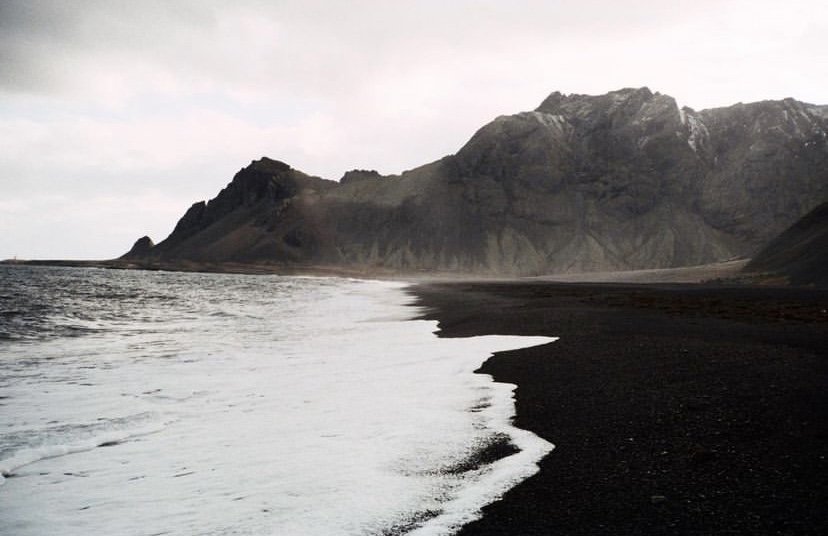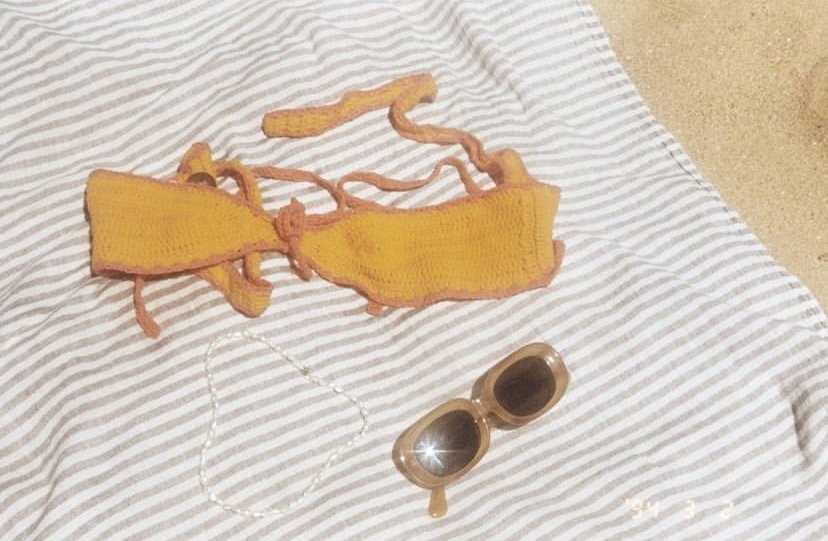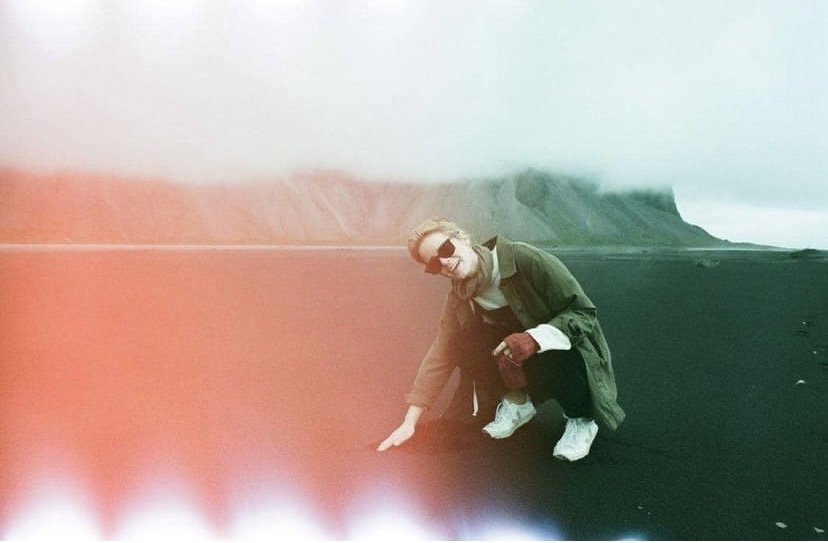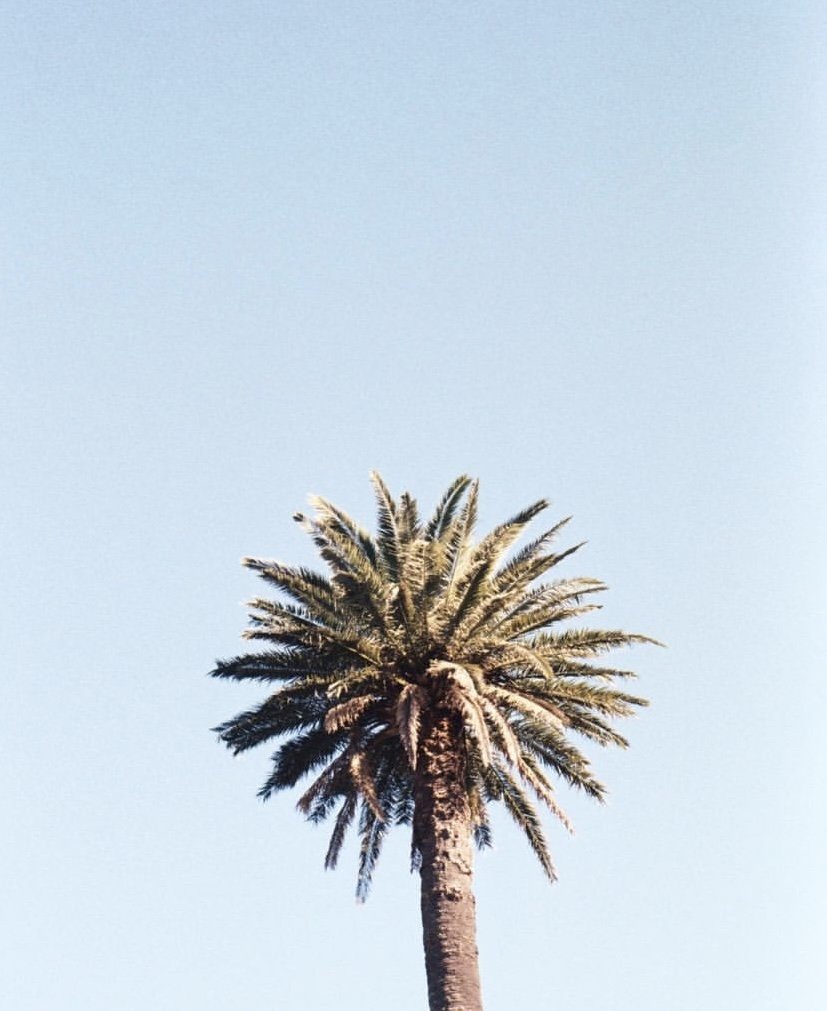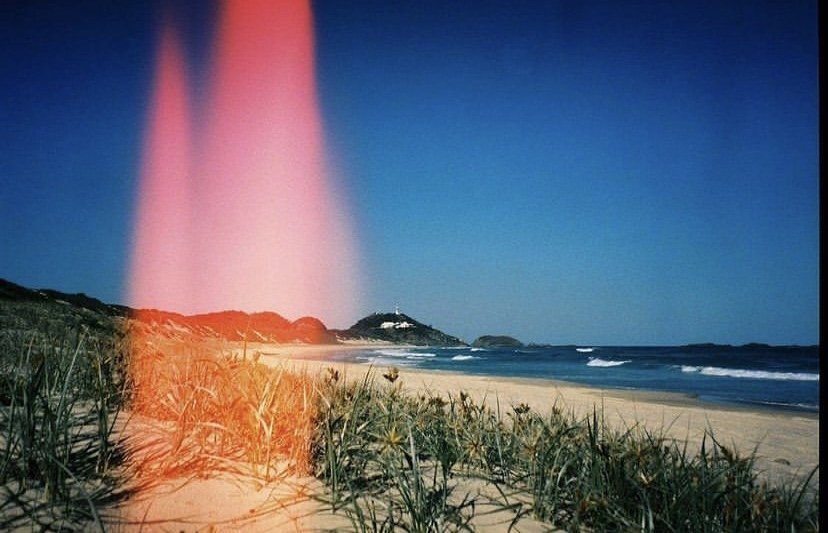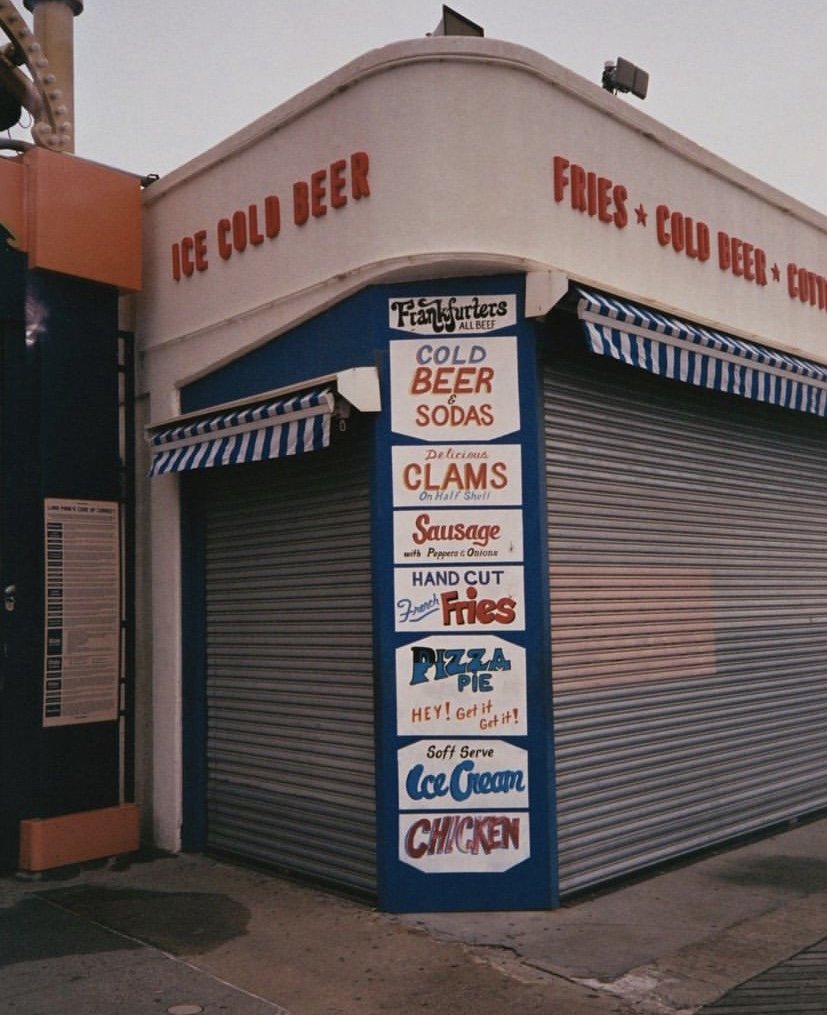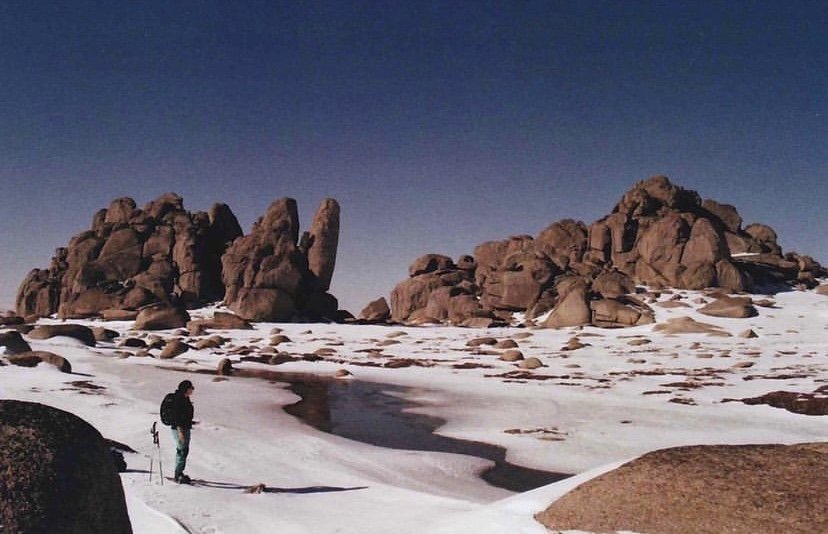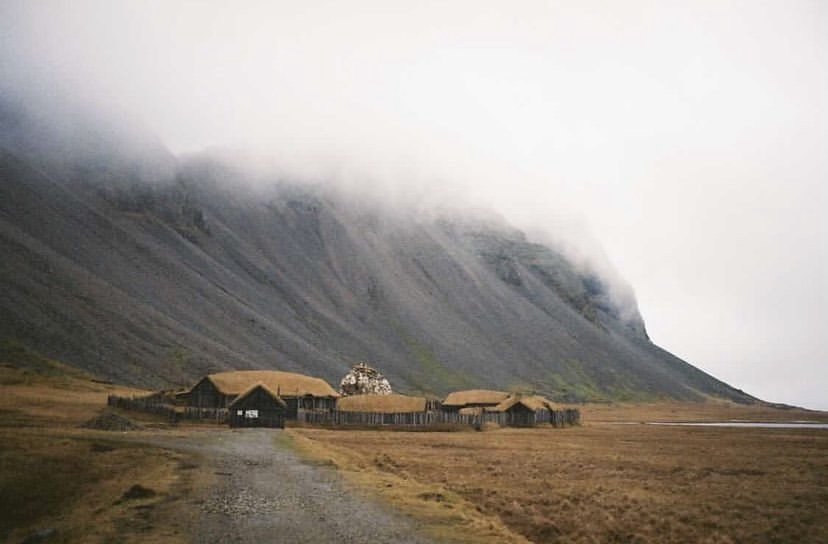SAM LEWIS
AVERAGE SHOTS
Meet Sam Lewis, the Central Coast local at the helm of boutique film house Average Shots. But, that’s in his ‘spare’ time — his 9–5 is spent working as a podiatrist (in a clinic that he owns). Pushing the standard working hours way past their limits, the man seems to have limitless stores of gusto. With energy and enthusiasm poured into all that he does, Sam is a wealth of inspiration for simply shooting your shot (…pun intended). We had a chat with the creative health worker about owning his own businesses, the treasure hunt involved with Average Shots and the pure, simple magic of film.
Sam! Hello! Could we say that you’re coming in hot from the lab?
Yeah, welcome to the Average Shots lab.
Is that a beer fridge or a film fridge?
That is unfortunately not a beer fridge — just a very full film fridge, we are indeed coming in hot from the lab itself.
Exciting! So, tell us all about Average Shots, your film processing small biz.
Average Shots was definitely my Covid baby.
So it’s a toddler now…
Yeah! I’ve modelled off a couple of really good film companies in Melbourne, where they’ve set up dropboxes — like little mailboxes around town where people can go in and drop their film off. I’ve done a lot of work with a surfshop, Lucky, in Long Jetty, and I have a letterbox sitting in there. People go in with their roll of film and on the letterbox is a QR code that takes them to my online form submission. They fill it in, tell me who they are, what they’re getting developed and leave it there. On a weekly basis, I go and pick them up and develop them.
I process about 30 rolls a week, which for labs, is not a lot. But for me, it’s a hell of a lot. It was meant to just be a bit of fun for myself, and now it takes way more time in my life. It’s way bigger than a hobby now.
If I had a day put aside, I would be able to develop and scan all of those 30, no worries. My issue is I don’t have a day. I do it in dribs. From the moment I get it to finishing it, I like to give a timeframe of 5–7 days. Most labs have a turnaround time of three days.
I’ve set Average Shots up as a ‘boutique business’. Which is my nice way of saying ‘I’m not gonna get it done quickly BUT I’m not gonna charge lab prices’.
As you’re not in the Average Shots lab full time, what does the majority of your week look like work-wise?
I work five and half days a week as a podiatrist. I have had my own podiatry practice in [Sydney’s] Hunters Hill for three years now. When I first bought that it was really quiet, maybe four patients a week. Now, I’m there three and half days, and another girl does a fourth day. My days are usually 20 consults, people coming in back-to-back. I leave the house around 6.30am, and generally leave around 6.30 at night. Big days.
Holy crap.
It’s a lot of work but podiatry is one of those jobs where you get paid per patient — paid per effort, you know?
Health freelancing!
Yeah. It makes it really hard to not work, and there’s a lot of burnout because of it.
Ok, let’s take it back. You’re 29, so to have had your own practice for three years is amazing. How did that all happen?
I went straight into uni [after school] with Exercise and Sports Science, with the intention of getting into Physiotherapy. I missed out on Physio with an ATAR, which was a shame. I did one or two years of Exercise and Sport and then I applied for the transfer, and got knocked back. I wrote a letter to the dean and was like ‘If you don’t let me in now, I’m gonna try again next year… and I’m gonna keep trying.’ And I got declined.
Damn.
Yeah, I was really disengaged. I left uni and worked at Surf, Dive & Ski for quite a few years. A mate’s mum asked if I’d thought about podiatry — I didn’t even know what it was at that point. I caught on that there were a lot of things that were similar and dissimilar to physio, all that I really liked. I applied, got in and then worked full time during first year. I did three subjects and I got a 51 and a 50. I was like… Fuck.
Scraped through by a bee’s knee, as they say.
Around that time I met [my wife] Laura and I just finished off the degree. Once I started working as a podiatrist, it kicked off the whole working-your-ass-off mentality. Back then it was really hard to get work. In that first year I worked for four different clinics across five days.
The Hunters Hill project came along as a chance thing. One of my mate’s worked there and asked if I’d be keen to buy it. I said ‘Where the hell is Hunters Hill?’ haha — I had no idea.
Cos it was such a small gig at the time, I just thought ‘It’s kinda risk free, I’ll take a punt at it’. It’s similar to the film stuff, it’s just gotten busier.
Something that was a risk-free gamble is now my primary income. It’s crazy that it’s happened in three years.
All that time and effort poured in! Ok, before we get back into the film stuff, what does a typical day as a podiatrist look like? You’re looking at way more than feet, right?
Yeah. That’s a massive misconception, which I try to actively change. Even doctors don’t have a full grasp as to how wide our scope is. In a day’s work, I’ll see absolute newborns who are having developmental issues — maybe they’re late to walk or not crawling properly — and then a 102-year-old who literally just can’t reach their feet. I help people who are very sporty and active, like footballers who need adjustments of their footy boots. I do nail surgeries and biomechanical work. It’s so wide and varied. I love it.
Incredible!
One of the big things that put me into it is the fact people want to come see you. Generally, in a consult they have a tangible outcome at the end. You walk in with a problem, you walk out and you feel better or there’s something to be done.
It must be really satisfying to be super solution-oriented.
Exactly. Other than that, it’s a really chatty job. There are some people that I’ll see 6–7 times a year for a 20-minute consult, and you learn about their families and their lives cos you just chat. I could do my job in five minutes, but I take 20 minutes cos I like to chat to them. Otherwise I have to deal with the grim reality that I’m cutting a toenail.
Haha! So, how’d you get into film photography?
In the early days with my wife Laura, we used to travel quite a bit. She had a film camera, an old Canon. I’d never done it, had no interest in it. Whenever we went away, we’d take Laura’s camera, she’d shoot photos and get them developed by an old fella who had a lab in the Imperial Centre in Gosford.
Amazing.
So the best thing is you take photos, and because it is an effort to get it developed, you don’t get them developed straight away. It might be a month or six months or a year later. Then suddenly, you have these memories in front of you.
I would go and pick up the photos from the lab but I was never able to look at them until we were together. We’d open this little envelope and go through these 36 (generally horrible) shots. Out of focus, overexposed... just shockers.
For my birthday one year, Laura got me a camera. I was shooting really irregularly at that point, then one day the old fellow in Gosford passed away suddenly. That really was the catalyst.
I started really, really basic developing on my own — literally out of the laundry. It’s this weird hobby where you can develop a photo, but you suck at it. But every time you do it, the more you look into it, the better gear you get, the better at the process you get. And the quicker the process can be.
I used to do it just for me and Laura. And then my mates who also shot film asked if I could develop theirs, and I thought ‘Oh, alright…’. It just snowballed. Honestly, it still baffles me how busy it is.
In all that spare time you have! You should have said ‘I own a podiatry business! I don’t know if you know, I work eight and a half days a week, so…’
Film photography is dead and buried in terms of the businesses, there’s no big businesses. So you are constantly trying to source this old equipment that isn’t manufactured anymore, isn’t serviced anymore, hasn’t got any warranties anymore.
Though, I feel like I’ve jumped into the film industry at this really interesting point. For years and years, old blokes with their superiority complexes in film have been saying ‘Film is a dying art, why on Earth would you get into it? It’s done, you’ve missed it.’ But, especially over the last six months, there’s been some really interesting developments in film where companies like Kodak have actually brought out new film. It’s the first indication that these gigantic companies have recognised that there is a resurgence in film.
What do you love about Average Shots?
I think it’s nice talking to people who are also learning. It’s weird, cos it’s such an old hobby, a lot of people who do it are older.
Photography forums can have a lot of naysayers, and there’s this silly mentality that ‘Old people know best’ or ‘You’re just doing this cos it’s fashionable’. That’s why I came up with the name Average Shots.
I wanted to have this idea that you don’t have to be getting big contrasty or focused shots — you can just take an average shot and that’s still fun, that’s still the bit of it that makes it enjoyable.
Absolutely. You’ve made it so accessible — from your Insta to your marketing. Like, even your use of the word ‘average’ is genius.
I think that’s why it’s resonated with people, especially with our age. It’s something that’s daunting to get into. You know, what kind of film do I shoot? What type of camera do I use? How do I do things properly? And having this business where the idea is to be average and to learn, I think, people really engage with that.
I can’t believe how well Instagram has worked for me in terms of a tool to build this. It’s literally made this a business, it’s the core of everything I’ve done. It allows me to engage with people, share photos, run giveaways, run ‘photo of the week’, Q&As. Maintaining engagement through Instagram comes down to actively using it and having consistency — with when you’re posting and what you’re posting. I thought ‘If I’m going to use it properly, I need to use it regularly’. Using Latergram has been really helpful — if I have one night where I don’t have film to process, I sit down and set up the next two weeks of photos so that it’s done.
With people holding info close to their chest, how did you learn to develop film?
Just a lot of research. Trial and error. Practicing a little bit by myself. I have had some absolute stuff-ups along the way. Off the top of my head, I had five rolls of film developing at once and they were all one client’s. I stuffed up the whole thing and had to hit this person up and say ‘Hey man, I am so sorry, those five rolls of film are gone’… He hasn’t been back.
Maaaaan. That is so rough… for both parties!
Yeah. Back to your point, there’s a lot of really good film labs out there on Instagram that are really informative and are trying to break down the barrier — like I’m trying to do — to getting into this whole artform.
You know, I try and break it down into bite-sized bits that are manageable for my audience. I constantly go through old Reddit forums that someone’s written in in 2008 — that’s how dated this info is. But you’ve got to get it. You’ve got to trawl through truckloads of info to get the bits you need.
I like that treasure-hunt mentality. I love trawling through Gumtree to find cameras or scanners or developing bits and bobs. You know, someone that’s getting rid of something that they think is junk but I might find just the right thing.
The whole process of what you’re doing is a treasure hunt, isn’t it?
Totally. Coming back from an overseas trip and developing a roll three months later… like, you have no memory of what the hell you took a photo of. I love it. It’s the best.
Magic.
Mate, it still gets me. You have this stuff that if you let it see the light, it’s ruined. It’s gone. And you get these plastic-y things that just let a tiny bit of light in, for a tiny amount of time, and it just grabs an image in front of you. It’s wild.
You shared the most beautiful photo of this truly gorgeous pregnant belly, and it struck me how intimate it is to share in these life moments. It’s a very personal experience that people are letting you in on.
It is. It’s very voyeuristic. I have met people after developing 20 rolls for them over a period of time and it’s this really weird feeling because I know you — I know who you hang out with, I know what you do — because I’ve developed your photos. But I’ve never met you. It’s weird cos you don’t want to be overfamiliar, but it is nice being able to share that type of thing.
The person that you’re talking about, I developed photos of her wedding, her babymoon, and literally the other day I developed photos of her newborn. You’re involved in lives from an outside perspective. It’s nice to help people have those memories.
It’s so connective, and really trusting for people to let you in on that.
Almost all photos that I scan, I look at them once, adjust them, edit them, scan them, send them. Because you do realise that you are in a position of trust.
So, where are you taking Average Shots? Is it soon to be your full-time?
I’m really lucky to have Laura. She’s been ridiculously understanding. Imagine your partner coming home and saying ‘Hey honey, I know I’m already working a ridiculous amount, but with this little hobby, I’m now going to go outside after dinner and spend two hours out there’.
At the moment, I look at everything as a means to get myself into a position where things can be better. I’m a very goal-orientated person. We’ve got a baby on the way and is due at the end of September. Initially, it was work by backside off so I can get a house. Then work my backside off so I can build my podiatry business so I can work for myself. Now it’s work my backside off for the baby. My goal is for Average Shots to justify a day a week in my life. Which at the moment, means it needs to be financially viable. I can’t just get rid of a day of work as a podiatrist, cos at the end of the day it’s my primary income.
So my mindset is: now, my work hours are ridiculous, it’s not sustainable, but it’s a means to get to a point that I will be able to have a more sustainable work–life balance. That’s my goal. Work four days, be home three days. If Average Shots is a means to allow me to do that, I’ve gotta make Average Shots viable. Which is why I do the work.
What’s been the highlight?
Earlier in the year, I had my first Average Shots exhibition — Bang Average. It was out the back of Lucky’s.
AMAAAAZING!
It was crazy. I just advertised it on Instagram and made posters and put them around town. There was a local band, The Good Love, who came and played. The closer it got to the day, I thought this is going to be really dorky and lame — it’s just gonna be my mum and my mates that come along.
I had people submit their photos and I got them all printed and framed and then hung up all along the walls. Being my first event I hadn’t thought about getting people to RSVP, so the afternoon came and I was like ‘Is there gonna be five people? Twenty people? How much beer should we get?’
And how many bags of chips?!
I reckon there would’ve been 150 people crammed into this little space. I had people coming up from Sydney who’d caught the train to come to it. And I remember going ‘You caught the train to come to this?’. Like, why would people care about coming to my exhibition? I remember just having these moments throughout the night and going ‘What the hell is this?’.
We ended up having to go to the bottle-o three times because we didn’t buy enough grog, again and again.
That’s the mark of a top-notch evening.
It was just a slap-in-the-face moment to make me realise how successful this little hobby had become. I just felt so grateful.
100%. You’ve created a community. People love it and are there for it — a beer and a boogie and some art.
Absolutely.
For a feed full of good vibes, follow Average Shots on Insta and check out Lowkey Zine, too. To get shooting, head to the Average Shots online store. Or, simply bless your day with this little guy.
Interview & edit Haylee Poppi & Grace MacKenzie



